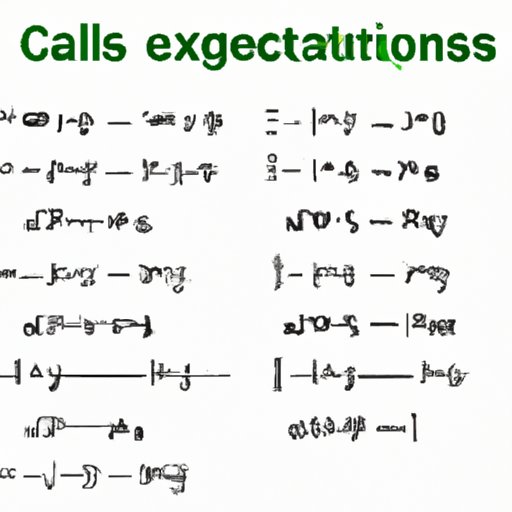
I. Introduction
Systems of equations refer to a set of two or more equations with the same variables. They play a significant role in various fields of mathematics and beyond. Understanding how to solve systems of equations is a crucial skill that can help with problem-solving in areas such as engineering, physics, finance, and economics. This article aims to provide a comprehensive beginner-friendly guide on solving systems of equations.
II. Basic Concepts of Systems of Equations
There are four types of equations: linear, non-linear, homogeneous, and non-homogeneous. Linear equations refer to equations in which each term is either a constant or a multiple of a variable. Non-linear equations refer to equations where one or more of the variables have an exponent or a radical. Homogeneous equations refer to equations in which all the terms have the same degree, while non-homogeneous equations refer to equations in which the terms have different degrees.
For example, the following are examples of linear, non-linear, homogeneous, and non-homogeneous equations:
- Linear: 2x + 3y = 7; 4z – 5y = 8
- Non-linear: x^2 + y^2 = 25; y = 3x – 4
- Homogeneous: 2x + 4y = 0; 3x – 6y = 0
- Non-homogeneous: 2x + 4y = 5; 3x – 6y = -2
It is essential to identify the type of equation given because it can influence the method used to solve the system of equations.
III. Step-By-Step Method of Solving Systems of Equations
There are two common methods used to solve systems of equations: the substitution method and the elimination method.
The substitution method involves solving one equation for one variable and substituting that variable into the other equation. This method can only be used for systems with two equations and two variables. The steps in the substitution method are:
- Choose one of the equations and solve for one variable in terms of the other.
- Substitute that variable into the other equation.
- Solve the resulting equation for the remaining variable.
- Substitute the variable’s value back into one of the original equations to solve for the other variable.
The elimination method involves adding or subtracting the equations to eliminate one of the variables. This method can be used for systems with two or more equations and two or more variables. The steps in the elimination method are:
- Make sure each equation has the same variables and write them in standard form.
- Multiply the equations by constants to ensure that one of the variables has the same coefficient in both equations.
- Add or subtract the equations to eliminate one of the variables.
- Solve the resulting equation for the remaining variable.
- Substitute the variable’s value back into one of the original equations to solve for the other variable.
Remember to double-check solutions and simplify them as much as possible.
IV. Common Mistakes When Solving Systems of Equations
Common mistakes people make when solving systems of equations include calculating incorrectly, forgetting a variable or equation, and not checking solutions. To avoid these mistakes, it is crucial to check your work at each step, organize your equations and variables, and check that your solution satisfies all the equations in the system.
V. Real-World Examples of Systems of Equations
Systems of equations are used in various fields, including engineering, physics, finance, and economics. An example of how systems of equations are used in finance is to determine the optimal allocation of funds. A system of equations can be formed to model the expected return and risk of different investment options, allowing investors to determine the best combination of investments to achieve their financial goals.
VI. Tips and Tricks for Solving More Complex Systems of Equations
Solving systems of equations with three variables or more can be challenging, but some tips and tricks can make it easier. For example, organizing the equations and variables can help keep track of which equations have been used and which variables have been solved. Another tip is to use the elimination method for systems with more than two equations and variables, by eliminating one variable at a time.
VII. Practice Problems and Solutions
Practice problems are an excellent way to improve your skills in solving systems of equations. Here, we provide practice problems with solutions, including examples of linear, non-linear, homogeneous, and non-homogeneous equations:
- Problem 1:
3x + 2y = 12
4x – y = 1
Solution: x = 2, y = 5 - Problem 2:
x^2 + y = 7
3x – 2y = 1
Solution: x = 1 or -7/11, y = 6 or 41/11 - Problem 3:
2x + 4y – 6z = 0
x – 2y + 2z = 1
3x – 6y + 8z = 10
Solution: x = 4, y = 1, z = 3
VIII. Conclusion
Systems of equations are an essential concept in mathematics and many other fields. In this article, we covered the basic concepts of systems of equations, step-by-step methods of solving them, common mistakes to avoid, real-world examples, and tips and tricks for solving more complex systems.





